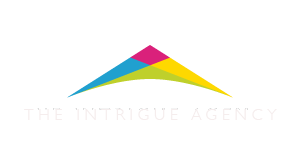Do you know how most speakers, managers and committee chairs wrap up their presentations and meetings? “Thank you for listening.” “We’re out of time. That’s it for today,” or “If you have any questions, please let me know.”
Talk about leaving results on the table! From now on, instead of trailing off or ending with a passive close that doesn’t inspire followup, plant specific action seeds such as:
“What is one thing you’ll do differently when you get back to the office tomorrow?”
“What exactly are you going to say if potential clients object to our fee?”
“When you get home tonight, where will you post your reminder card?”
“What tangible results will you report back at our Monday morning meeting?”
“At our next break, at 2:30 . . .”
In fact, those four words “At our next break …” helped an entrepreneur named Marcia motivate a room full of investors to follow-up with her. Marcia was scheduled to give a funding pitch for her startup in the afternoon following lunch. She was worried audience members would be half asleep, so we crafted a sixty second close to make sure people were crystal clear how they could follow up with her. Here’s what she said:
“I’m Marcia, the one with the white, spiky hair … .
At our next break at 2:30, I’ll be at our table in the right-hand corner of the lobby.
If you’d like a product demonstration, a copy of our financial projections, or would like to meet our CTO to discuss our patented software; you’re welcome to come by.
Once again, I’m Marcia with the white, spiky hair. I look forward to seeing you at 2:30.”
Guess who was surrounded by people at the next break? You’re right, Marcia. Why? She was the only one who gave three specific ways and reasons to continue the conversation. She:
* Repeated her name in her close to imprint it. (Think about it. After a long day, how many speakers’ names can you recall? And if we don’t know someone’s name, we’re not likely to approach them.)
* Made a visual self-reference so she stood out in the crowd. (This is not trivial. How will people be able to pick you out in a sea of suits unless you give them a colorful clue such as, “I’m Bob, the one in the green jacket” or “I’m Patricia, in the red suit.”)
* Identified a specific time and location where people could connect with her. (Don’t be vague. Say, “I’ll be by the front desk from 3-4 pm.” Or “You’re welcome to call me during office hours on Monday between ten and noon.” Or “I’ll be back in Texas September 3rd and would be glad to schedule an in-person appointment.”
* Offered three incentives for continuing the conversation. (Far too many people trail off with a passive, “Please let me know if you have any questions.”)
By the way, do you notice a pattern in these suggestions? They offer people OPTIONS instead of giving them ORDERS.
Do you know anyone who likes to be ordered around? Telling people, “You need to” “You have to” or “You should” elicits a “Grr, you’re not the boss of me” reaction. Offering a variety of strategic choices gives people the freedom and autonomy to select a course of action that’s most appealing and relevant to them. They are a lot more likely to initiate action – because they want to, not because they’re being told to.
Pilot Chuck Yeager said, “At the moment of truth, there are either reasons or results.” What will you do at the end of your meeting to increase the likelihood people take action and produce beneficial results as a result of their time with you?

